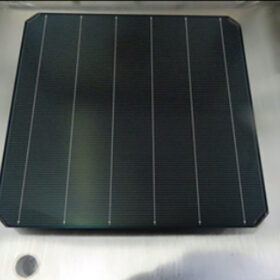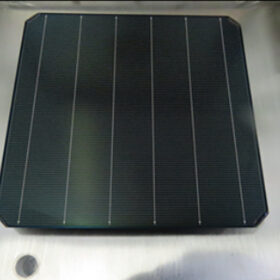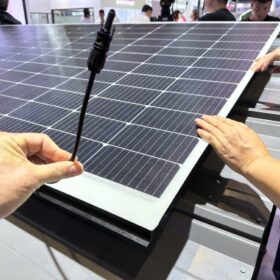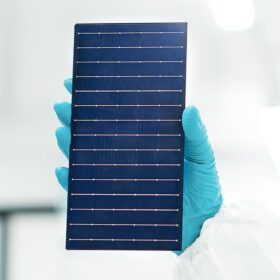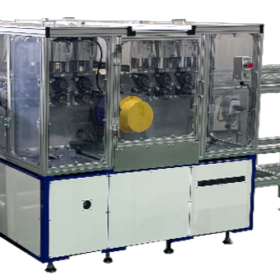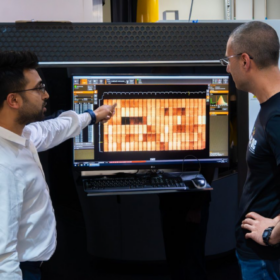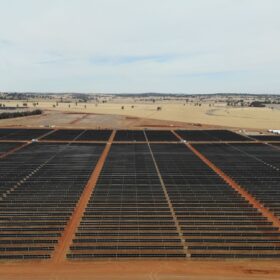Longi reveals details of world’s most efficient silicon solar cell
In a new scientific paper, the Chinese solar manufacturer explained that the 27.81%-efficient hybrid interdigitated back-contact cell it unveiled in April is based on passivated tunneling contacts and dielectric passivation layers, while also incorporating both n-type and p-type contacts.
Longi reveals details of world’s most efficient silicon solar cell
In a new scientific paper, the Chinese solar manufacturer explained that the 27.81%-efficient hybrid interdigitated back-contact cell it unveiled in April is based on passivated tunnelling contacts and dielectric passivation layers, while also incorporating both n-type and p-type contacts.
Phono launches 475 W back-contact panel in Australian market
Chinese manufacturer Phono has launched a new bifacial solar panel in the Australian market featuring an output of 475 W and a power conversion efficiency of 23.27%.
Sinovoltaics updates solar module manufacturer financial stability ranking
The quality assurance provider reported India-based Insolation Energy, Waaree Renewable Technologies, and Solex Energy retained the top three positions in its Altmann-Z score-based quarterly ranking. Its analysts noted the number of companies with healthier scores increased from nine to 11.
Optimising PV system tilt angle, MPPT using fuzzy logic controller
Researchers in the Middle East have developed a fuzzy logic controller that simultaneously optimises the tilt angle of PV systems and performs maximum power point tracking. Year-long simulations indicate that the proposed approach increases power generation by approximately 20%.
Outdoor testing identifies factors contributing to perovskite solar cell degradation
Tests conducted by a research team in outdoor environments in Spain and Poland have demonstrated a strong correlation between perovskite solar cell degradation and the combined effects of climatic and operating conditions. The scientists found that open-circuit operation accelerates degradation, whereas operation at the maximum power point and under short-circuit conditions has a lower impact.
$25.3 million finance to advance SunDrive copper solar cell technology
The Australian Renewable Energy Agency has committed $25.3 million to SunDrive to support its copper metallisation technology from development at its South Sydney facility to a 300 MW commercial-scale production tool.
Chinese PV Industry Brief: Major solar manufacturers report steep Q3 losses
Longi Green Energy, JinkoSolar, and JA Solar each posted significant third-quarter losses amid continued price declines and high inventory levels, raising concerns among analysts about oversupply and margin pressure across the PV supply chain.
Japanese companies partner to establish solar glass recycling scheme
Two Japanese companies have announced a partnership to advance the recycling of solar panel cover glass for application in architectural flat glass production.
Solar cell inspection tool evolution set to slash manufacturing costs by billions
Researchers at the University of New South Wales in Sydney are working with the institution’s spinout company BT Imaging to accelerate the commercialisation of solar cell defect detection technology, thanks to a $1.4 million commercialisation project.
